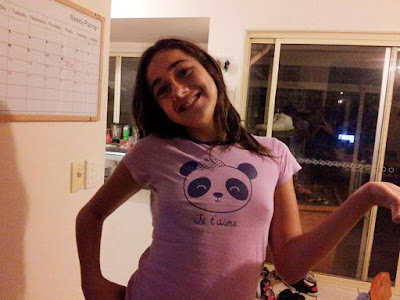Eleven months after her death, the former foster family of 12 year old Tiahleigh Palmer were charged with offences relating to her murder. The allegation is that her former foster father murdered Tiahleigh to cover the fact that his 19 year old son had sexually assaulted her and feared she was pregnant. Her former foster mother and the couple's other son have been charged with perjury and attempting to pervert the course of justice.
Tiahleigh Palmer was in foster care because it was deemed her mother could not look after her, and she required protection. Protection. So how the hell was she sent to live with a family who did this to her? An adult son who allegedly raped a child, and a father who allegedly murdered that child to cover up his son's crime? Who made the decision that this was where Tiahleigh would be safe? What the hell happened here?
There are many people asking these questions, such as Hetty Johnson from the child protection group Bravehearts; so hopefully the answers will come out. The Queensland foster vetting system seems fairly thorough. Unlike NSW, where as I wrote vetting and assessments are performed by a private, for profit subsidiary, in Queensland the procedure seems to be carried out, in its entirety, by the governmental child protection department. It is a complex process, taking from three to six months. All adult family members must submit an application form, disclosing all criminal and child protection history, domestic violence and traffic offences. All adults must then successfully apply for blue cards, Queensland's equivalent of working with children checks. There is then a household safety assessment, health and well being checks, and referee checks. All adult family members are then interviewed before, finally, completing pre-service training.
So how - assuming the process was followed correctly by trained and experienced assessors - did the Thorburn family slip through? Were there no warning signs, no red flags, nothing to suggest just how very unsafe Tiahleigh would be there? Nothing to suggest she might be safer in the care of her mother, Cyndi, who after a troubled past was heartbreakingly trying to get her daughter back?
Some commentators may opine that the solution to child abuse is to take children from their families at the earliest opportunity and place them with permanent carers - but this is fraught with difficulty. As well as cutting children off from their kinship groups, culture and community, as we can see, it does not guarantee a child's safety. This is especially difficult in the case of Indigenous children, who are removed from their families at a much higher rate than non-Indigenous children, and despite departmental regulations, are often placed with non-Indigenous carers when kinship carers and Indigenous foster families cannot be found. It's worth noting, perhaps, that Tiahleigh Palmer was Maori, whilst her foster family apparently was not - what connection to her culture was she able to maintain?
And we see endemic racism rear its head, again, in the narrative of her disappearance and death. Police took six days to investigate her disappearance; she was, after all, a brown girl from a troubled background. Media report her as being "sexually involved" with her stepbrother; non-white girls are fetishised, seen as less pure, less innocent than white girls. The truth that a twelve year old girl was allegedly raped by a grown man who was supposed to protect her - who was sanctioned by the state to protect her - gets lost.
Oh Tiahleigh you poor baby, you never had a chance. I'm so sorry you were failed in such a catastrophic way. I hope your killers are brought to swift justice. I hope those who allowed you to be placed in such peril are held accountable. I hope your family can find some measure of comfort from that. Rest in Peace sweet girl.
 |
| Photo: News Corp. |




0 Comments
Post a Comment